Like an Onion: Peeling Back the Layers of Emotional Discomfort
How many times have you heard one of the following?
“Stop crying.”
“Stop thinking about it.”
“Don’t worry about it.”
“Don’t get so mad.”
“Don’t let it get you down!”
If you related to any of those, chances are, you also felt some kind of internal response to them. Maybe it was a twinge of anger or a flash of a memory from your childhood. Or maybe it is frustrating at the constant message that emotion or thought can be switched on and off on command.
Crying is normal. Having thoughts, worrying, anger, and sadness are normal! So, if that is the case, why are we so accustomed to telling one another to stop or not think or feel a certain way?
Every day, we feel different emotions, experience different thoughts, and receive various messages. However, if something makes you cry or notice a painful thought, is it really that simple to turn off your tear supply or brain? In truth, turning off an emotion or thought is neither simple nor possible. For example, I challenge you to take a moment and do anything but think about your left toe.
Don’t think about its shape, location on your foot, or the fact that you aren’t supposed to be thinking about it. Don’t think about it. How did you do?
You probably thought about it because we cannot control our thoughts and emotions. We can only control the power we give to them. So, when someone tells you to stop crying, thinking about something painful, worrying, getting angry, or feeling down, they say, “Be happy because feeling the way you do isn’t how you should be thinking or feeling.” In actuality, we are then implying that the ultimate goal in life is to think happy thoughts and be happy solely. However, being happy is not always sustainable nor allows for growth.
Now, I know that may sound strange, but all emotions are normal, even those uncomfortable ones. As humans, we cannot know the comfortable emotions without the uncomfortable ones.
It is no secret that some emotions are more pleasant to experience than others. Happiness feels much more enjoyable than sadness, love is more fun to show than anger, and we would probably instead feel more excited than anxious. We have gotten so accustomed to focusing on the desirability of emotions that we, as a society, have started labeling emotions as “good,” “bad,” “negative,” and “positive.” However…
How can an emotion be good?
How can an emotion be bad?
What is a positive emotion?
What is a negative emotion?
A standard answer to all of these questions is that we look at the quality of an emotion based on how comfortable it is for us to express it. An emotion is “positive” because it makes us feel “good,” and an emotion is “negative” because when we experience it, we feel “bad.” But what starts to happen when we feel a “negative” or “bad” emotion when we only want to feel “good?” We start to feel “badly” about feeling “badly” because when we feel “badly,” we aren’t feeling “good.” And, when we don’t feel “good,” we try to run from whatever makes us feel “badly!”
So, how do we learn to live with emotional discomfort and comfort? Through something called acceptance.
It is important to note that acceptance of an emotion or thought means acknowledging and allowing its presence, not liking or wanting it. It would be outrageous to ask someone to learn to like anger or anxiety. However, it is slightly less outrageous to ask someone how their current avoidance of uncomfortable emotions or thoughts is helping them or hurting them and whether its costs outweigh what it does for them.
When we spend our time and energy running from the emotions we do not want to feel, we can limit ourselves and move further away from living out what matters to us. We can even engage in harmful actions, like substance use, isolation, impulsivity, or procrastination. That is why learning to accept emotional discomfort as a regular part of being human is the first step in learning to live with it rather than on the run from it. Chances are, avoiding an uncomfortable yet inevitable emotion probably doesn’t make it go away but leads to further discomfort.
An uncomfortable emotion or thought is kind of like eating an onion. Onions are a crucial part of cooking, and many people do not like them, but they can be hard to avoid. If you accidentally get a taste of onion, you will probably taste it for the rest of the night. You might brush your teeth, eat something sweet, or drink a lot of water, but the onion taste comes right back and is more potent than before. When you allow the onion taste to be there and ride out the duration of its taste, you can get rid of the taste in your mouth. Uncomfortable emotions or thoughts are the same way. Just like the onion, it has layers. With open and willful curiosity, you peel each layer of it back and try to learn from it.
What is the discomfort telling you?
What does it mean to you? What does it mean about you?
How is this discomfort trying to help you? How is it trying to hurt you?
How is this discomfort different from past discomfort? How is it the same?
Next time you notice yourself feeling emotional discomfort and having the urge to avoid, escape, or distract from it, ask why it is there and lean into it. These questions can be a great way to start looking at emotional discomfort as a guide to emotional comfort rather than a barrier to it. If you experience emotional discomfort, leaning into it with curiosity rather than defiance helps break the cycle of running from an unavoidable part of human nature.
-
Practicing Coping Skills Before You Need Them and Start Benefiting From Them When You Do
How to Start Acting as the Person Who You Want to Be!
Embrace Unhelpful Thoughts and Continue Focusing on What Matters Most to You!
The Power of “And”: The Art of Balancing the Dreams and Limits of Our Inner Worlds!
Search Our Other Blogs!
Interested in Online & In-Person Counseling for Stress, Anxiety, & Emotional Regulation?
If you’re a Marylander who knows that counseling is the direction you need to take, the therapists at LifeSpring Counseling Services are here to help. We offer online counseling services for mindfulness, depression, anxiety, trauma, and grief and loss. We also offer Brainspotting as a specialized service, and Brainspotting can be done online, too!
Here’s how you can get started! Online and in-person counseling for stress, anxiety, & emotional regulation aren’t the only services offered at our Monkton, MD office.
The counselors and social workers at our Maryland office also offer counseling services for trauma, grief and loss, boundary setting, communication skills, and difficult life transitions. We also offer specialized counseling services including Brainspotting and spiritually-integrated counseling. Because we are located next to several local universities, we also work with college students and international students.
Written by: Sophie Koch, LGPC
Sophie is a LifeSpring therapist who offers online and in-person counseling services to adolescents and adults (15 and up) to offer help with depression, anxiety, borderline personality disorder, trauma, and mood disorders.


